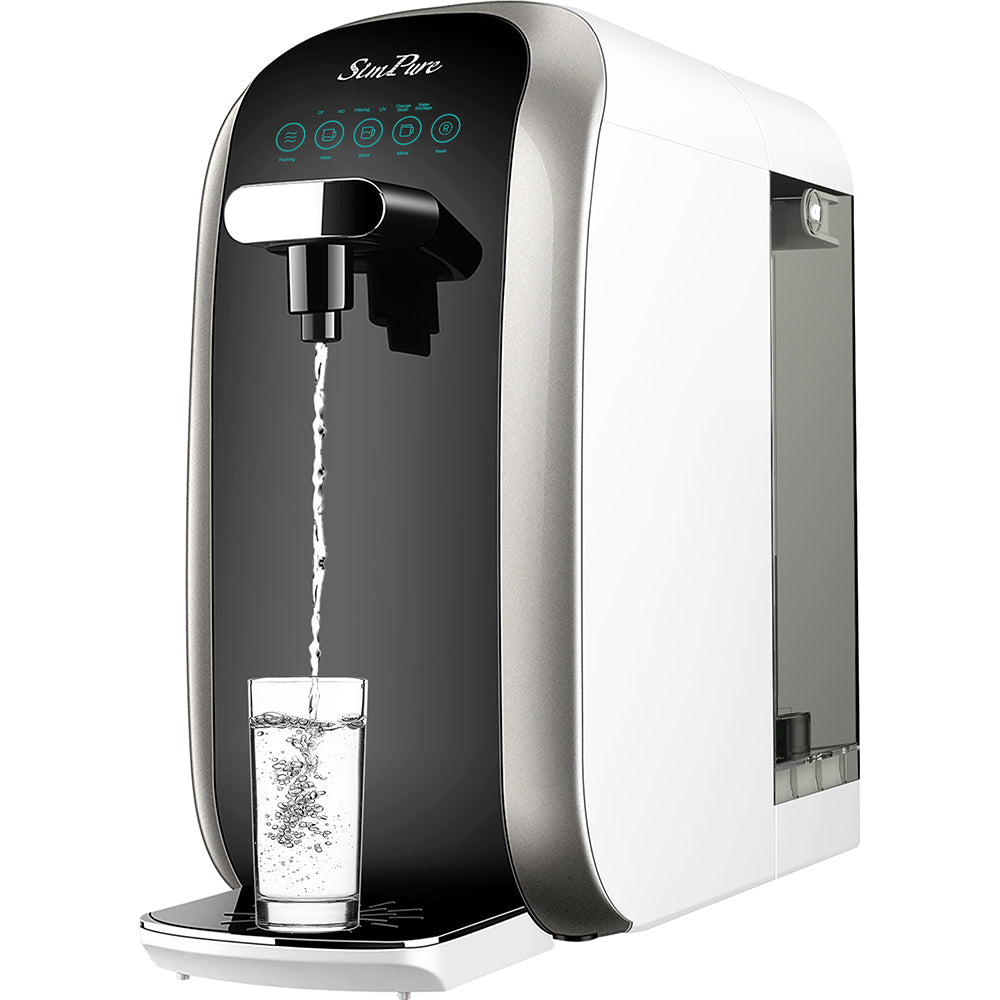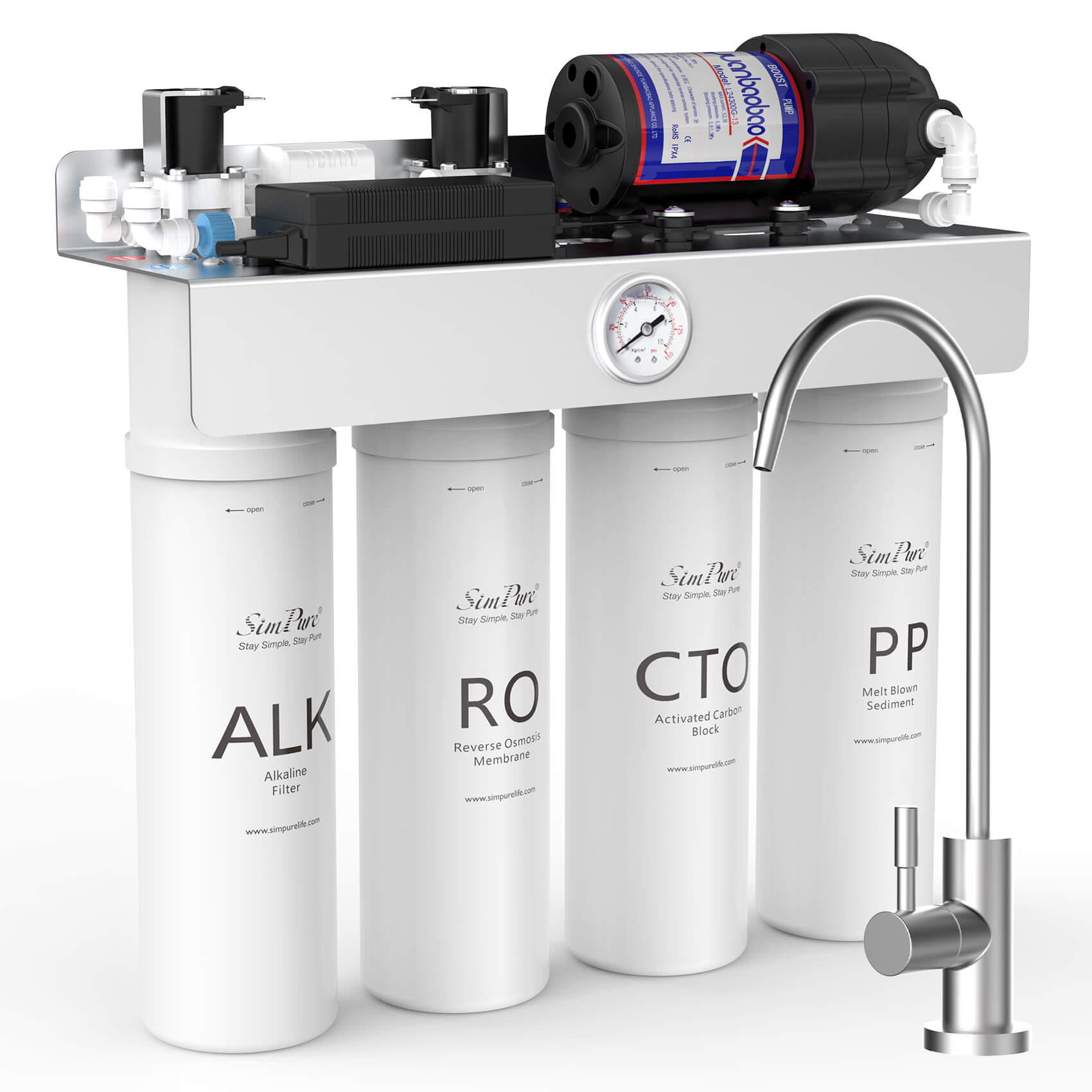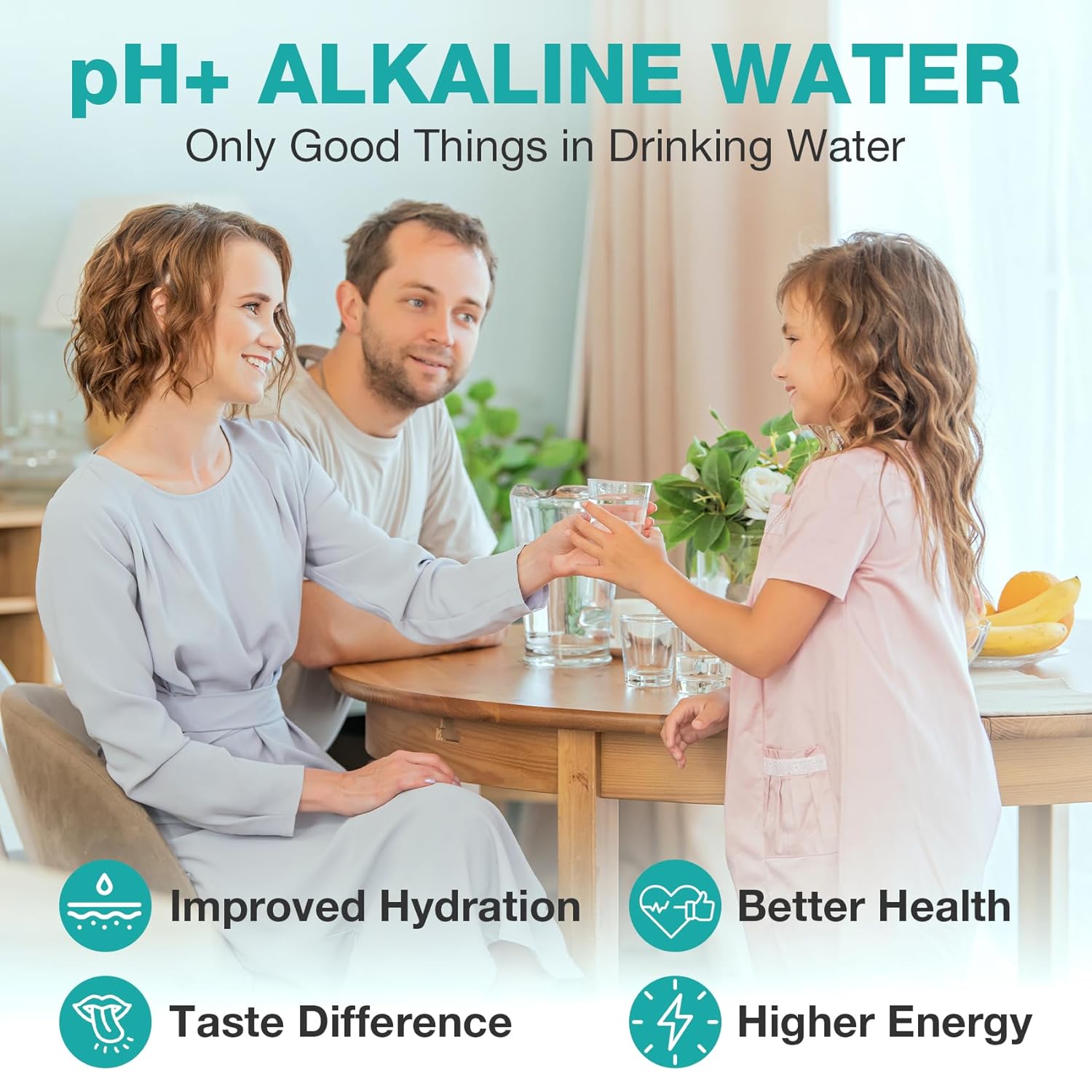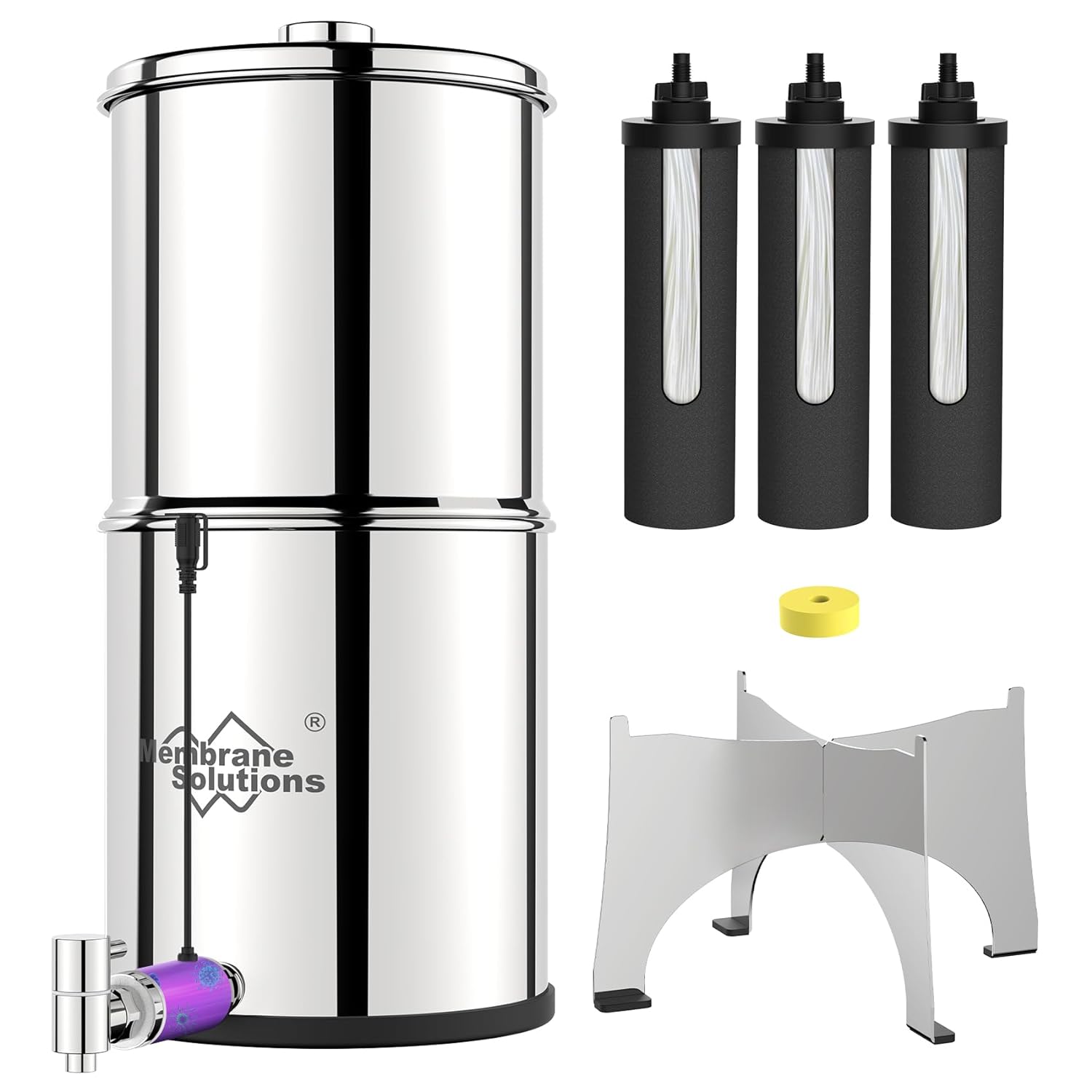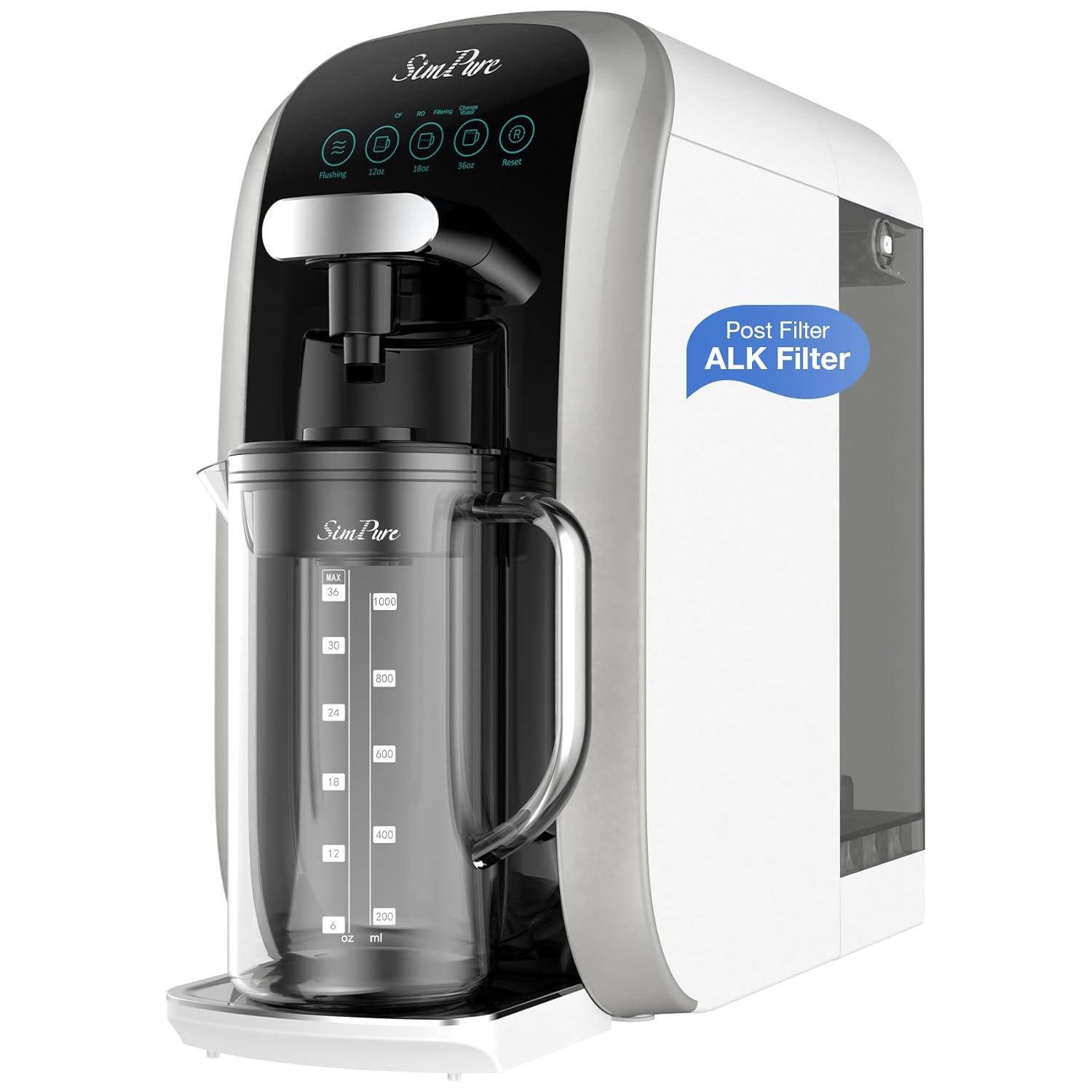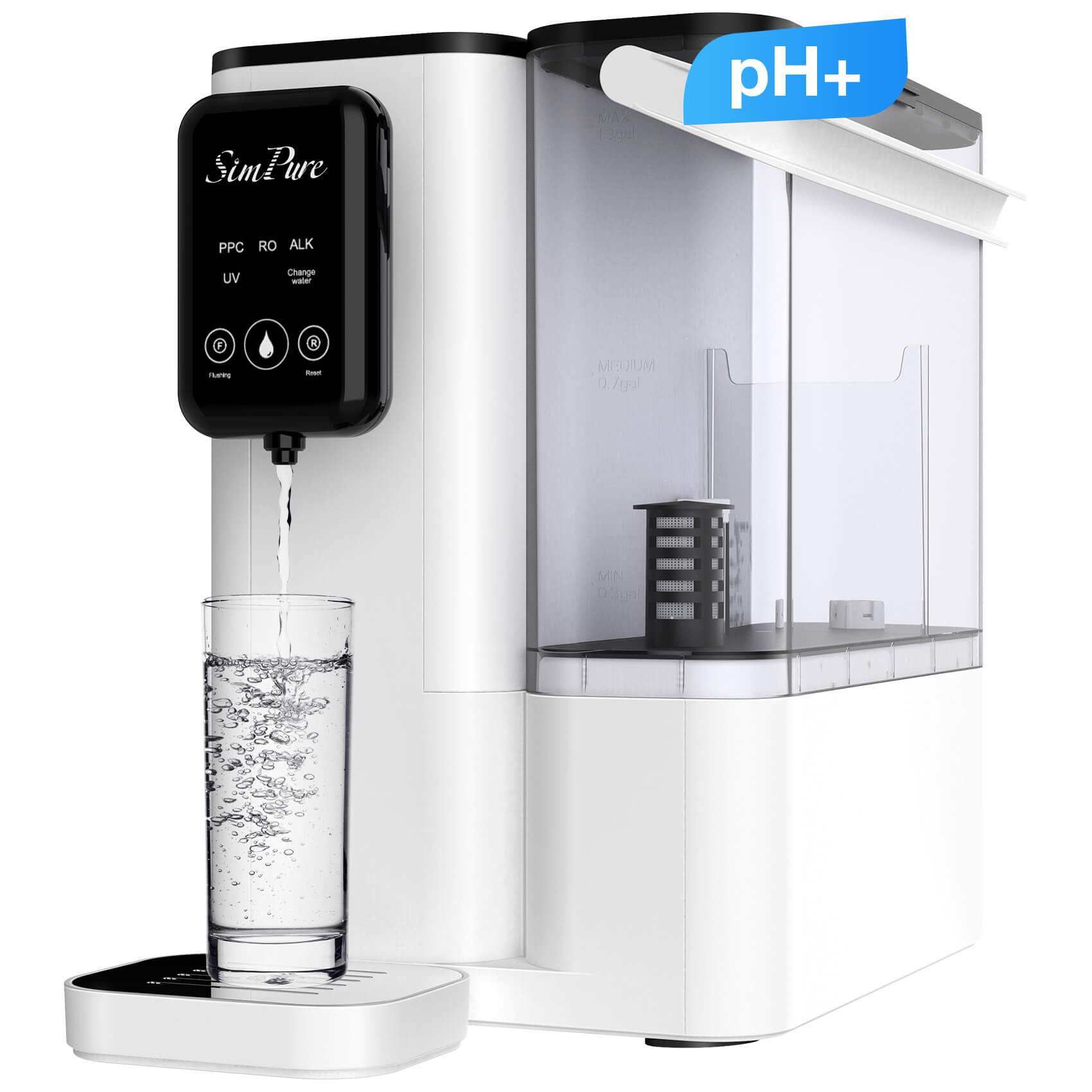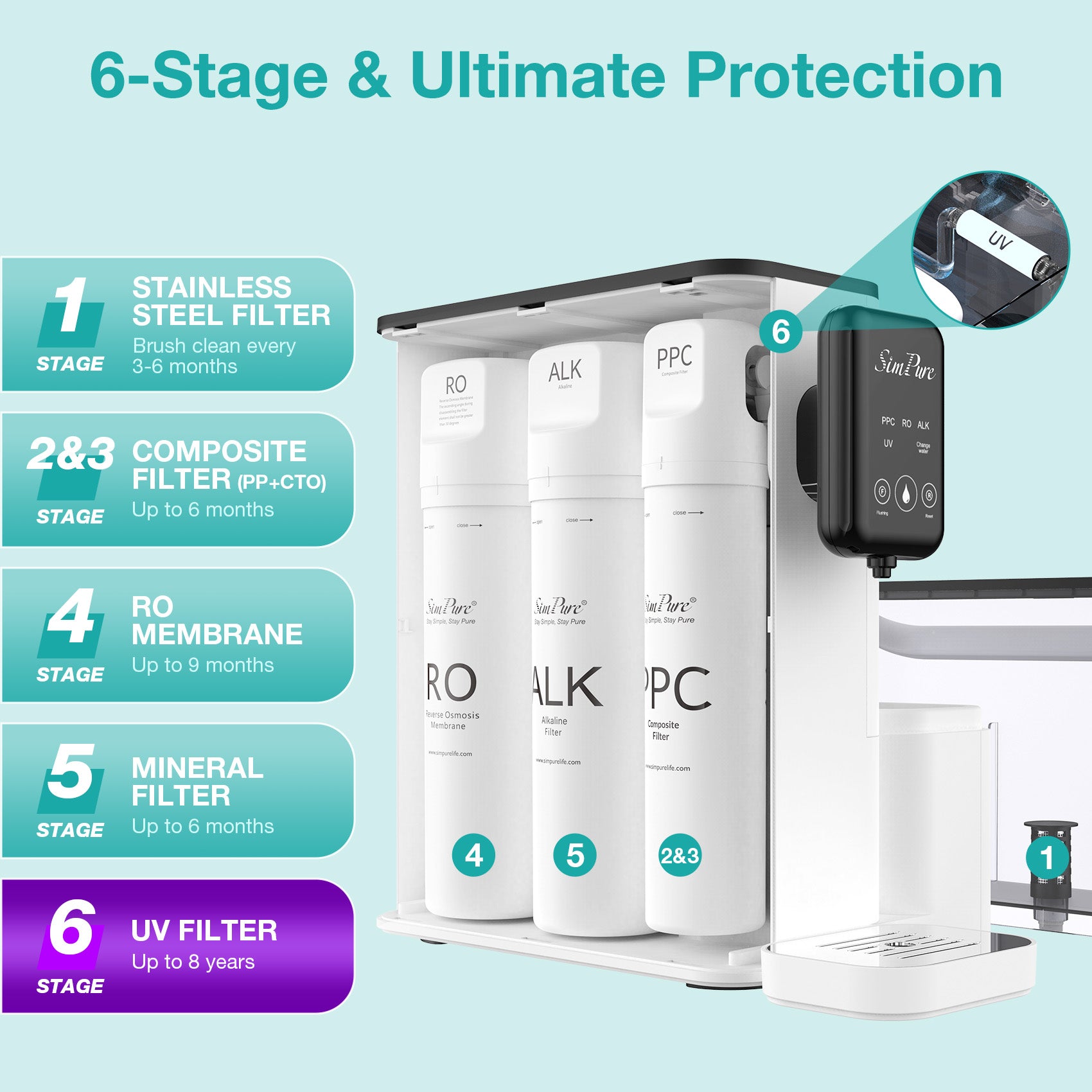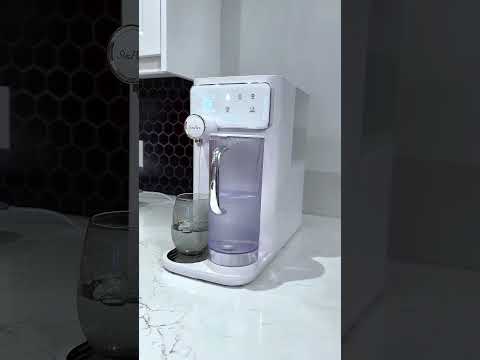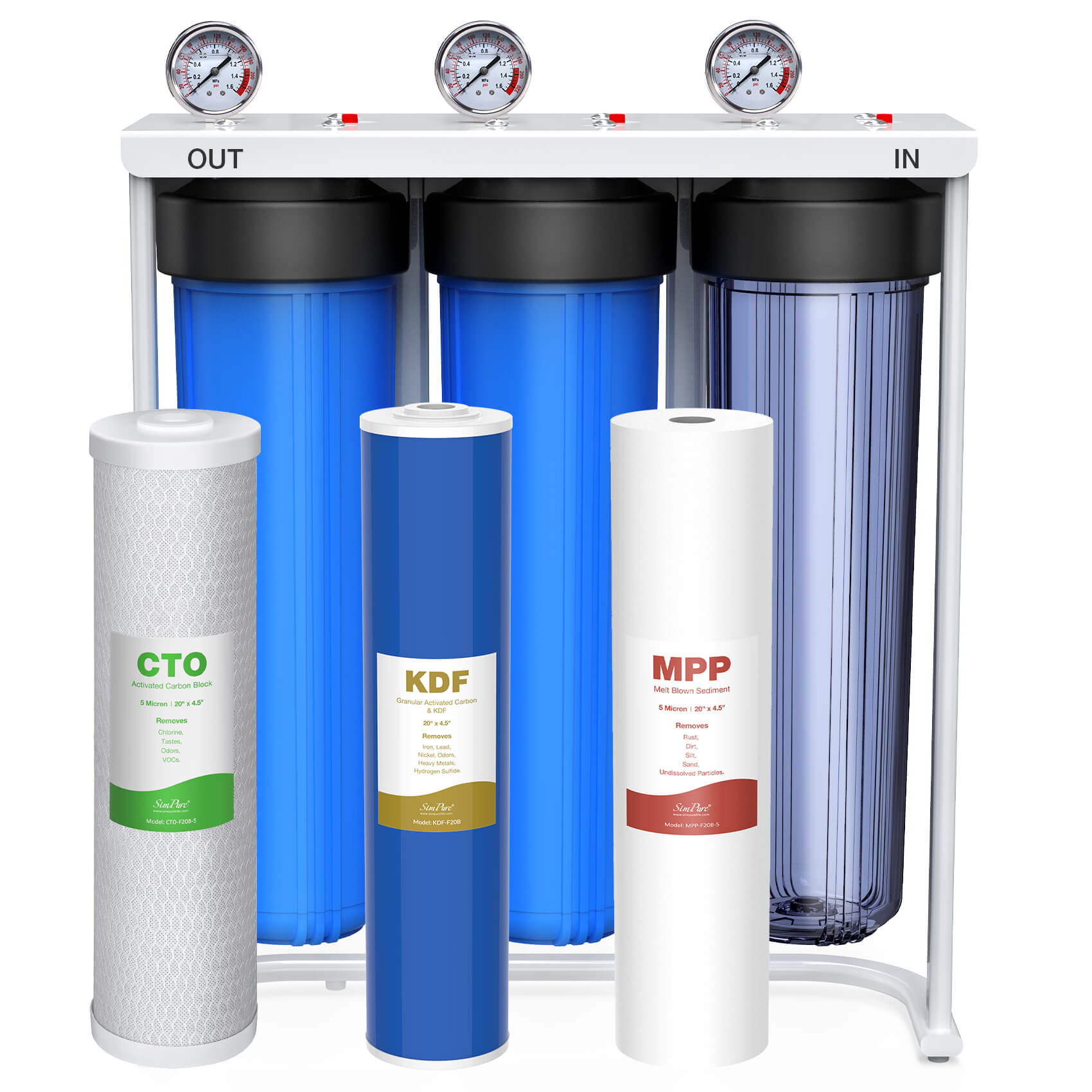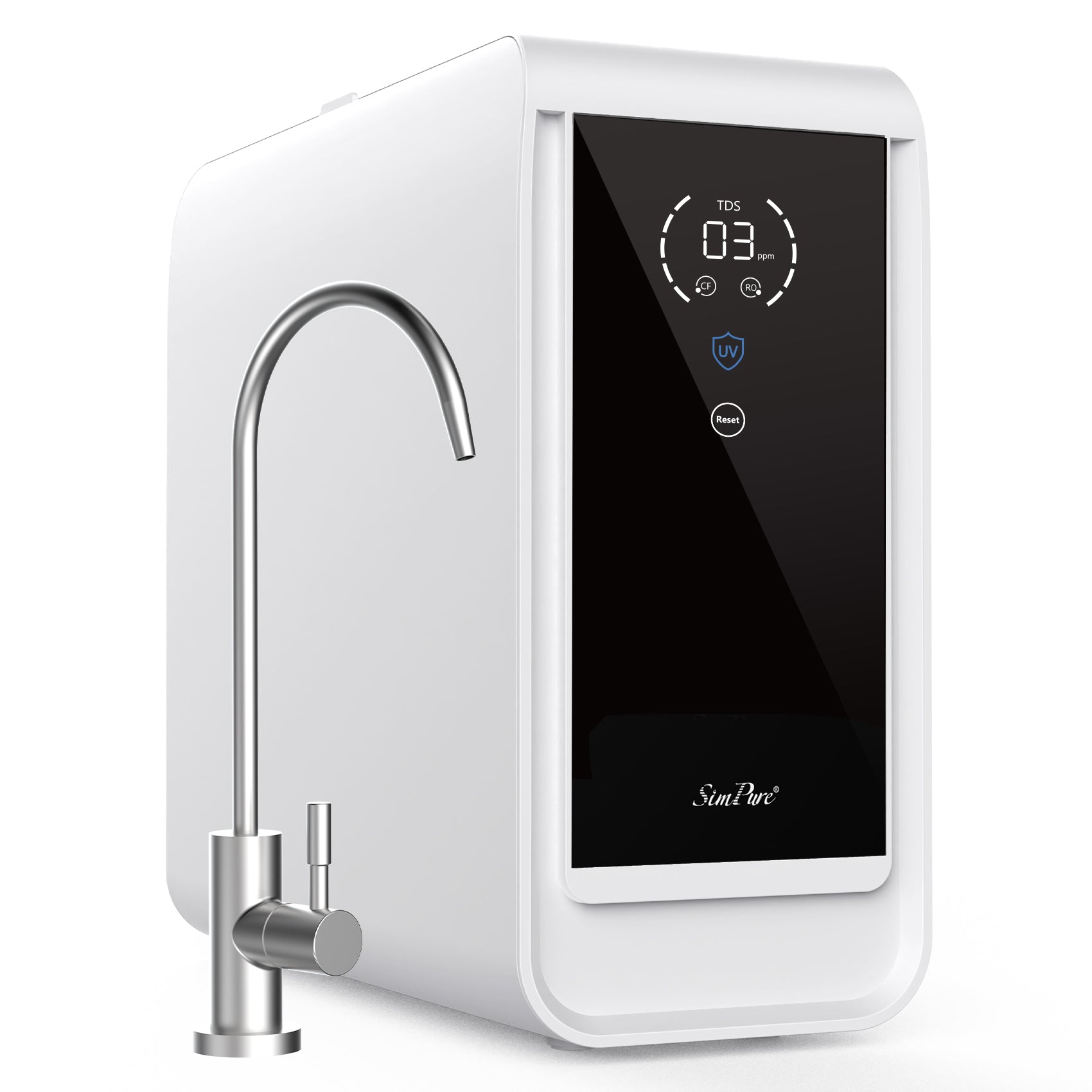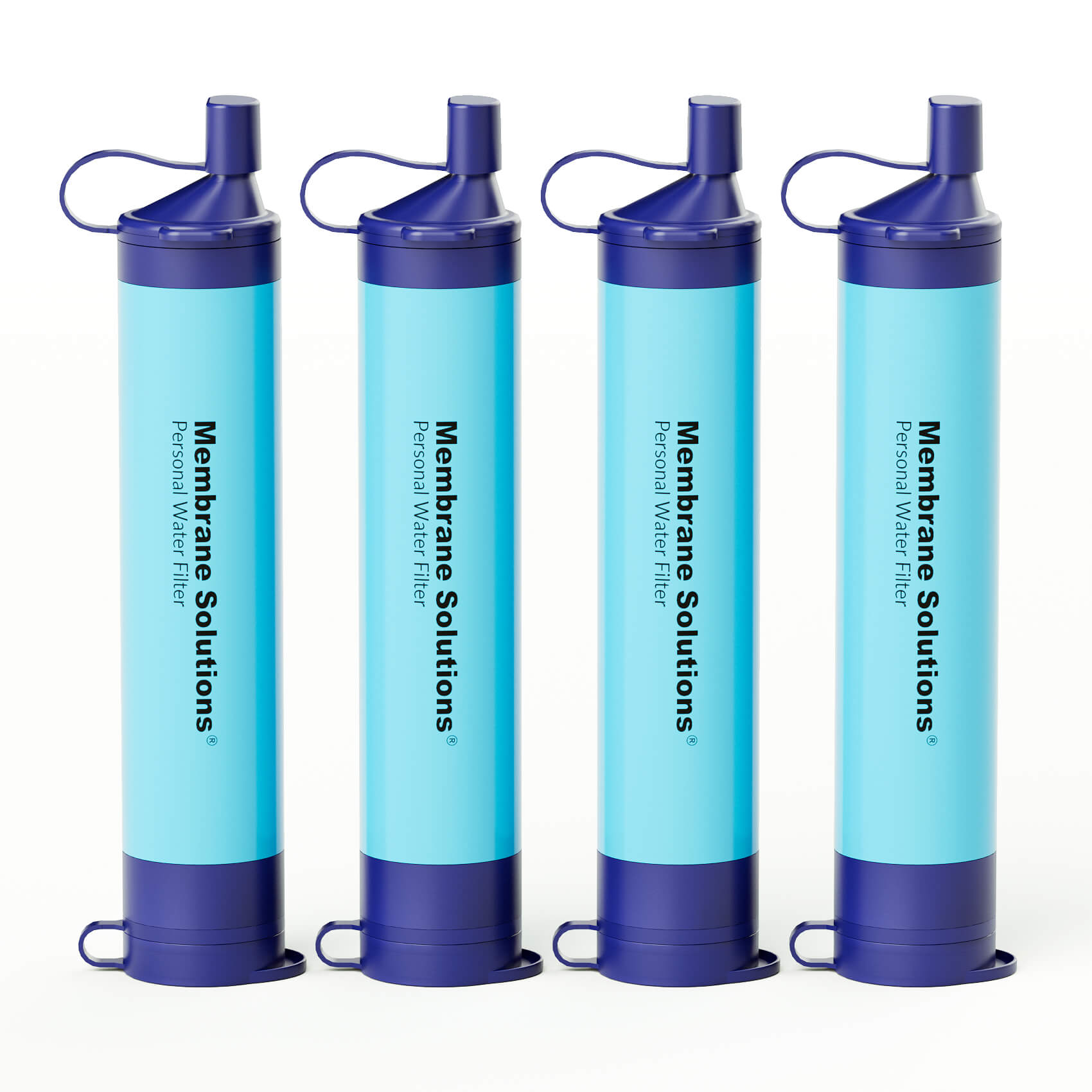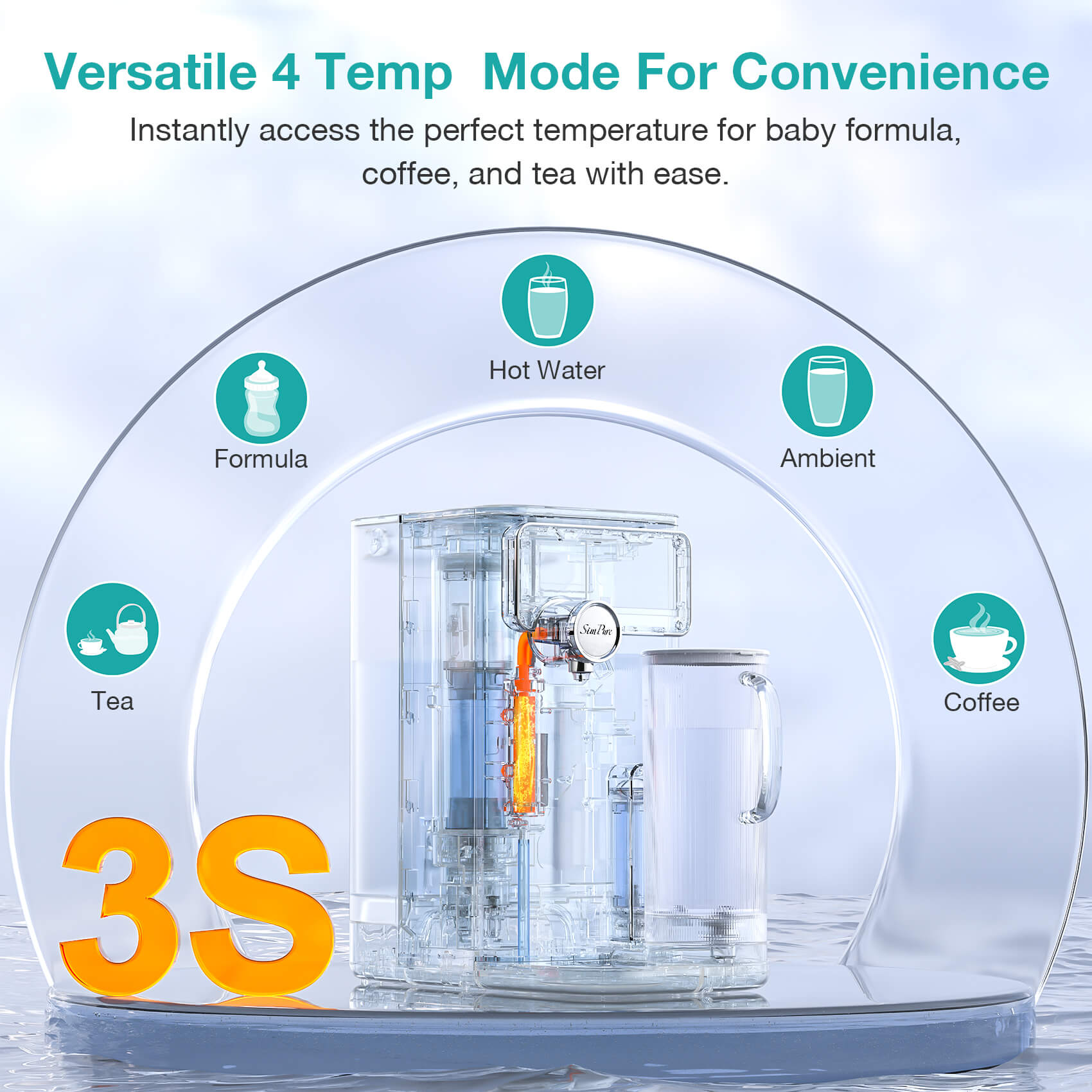In recent years, the "invisible threat" hidden in drinking water is causing health anxiety around the world. From the tragedy of lead pollution in Flint, the United States, to the detection of high concentrations of PFAS (permanent chemicals) in many places in Europe, these difficult-to-degrade pollutants are quietly infiltrating into daily life. The neurotoxicity of lead may damage children's intellectual development, and the association of PFAS with cancer and immune system disorders is even more chilling.

According to data from the US Environmental Protection Agency (EPA), more than 7 million households had excessive lead levels in drinking water in 2022 alone; at the same time, a Duke University study found that PFAS was detected in nearly half of the tap water samples worldwide.
Faced with this situation, the reverse osmosis system is regarded by many families as the "ultimate line of defense" - it can filter up to 99% of pollutants, including RO's interception of lead and its effectiveness against ultra-small molecular pollutants such as PFAS, so how does a reverse osmosis system remove lead and pfas? This article will analyze RO technology to help you make a wise choice in the battle for pure water.
What is Reverse Osmosis?

Reverse Osmosis is a physical filtration technology using a semipermeable membrane. It forces water molecules to pass through the membrane in the reverse direction of osmosis by applying high pressure, thereby intercepting pollutants such as dissolved salts, organic matter, and microorganisms to achieve efficient water purification.
Core features of reverse osmosis:
1. Efficient removal of pollutants
- Can remove **99% of total dissolved solids (TDS), including heavy metals, sodium ions, fluoride, etc.
- At the same time, it intercepts bacteria, viruses, and macromolecular organic matter (such as pesticide residues).
2. Relying on water pressure drive
- External pressure (usually 4~8 bar) is required to overcome the natural osmotic pressure and push water through the membrane.
- The efficiency decreases during low pressure or power outage, and concentrated wastewater may be produced (about 1:1~1:3 pure water to wastewater ratio).
How Does the Reverse Osmosis System Remove Lead?
The scientific principle behind it:
1. Size exclusion effect
-Hydrated size of lead ions:
Lead usually exists in water as a divalent cation (Pb²⁺), and its bare ion diameter is about 0.4 nanometers. However, in solution, lead ions will combine with water molecules to form "hydrated ions", and the diameter can increase to **0.6~1.2 nanometers.
- Reverse osmosis membrane pore size:
The pore size of the RO membrane is only about 0.1 nanometer, which is much smaller than the size of hydrated lead ions. This physical barrier directly prevents lead ions from passing through the membrane pores, achieving efficient retention.
2. Charge repulsion auxiliary effect
The surface of the reverse osmosis membrane usually has a slight negative charge, while the lead ion (Pb²⁺) is positively charged. The charge repulsion effect further prevents lead ions from approaching the membrane surface, enhancing the removal effect.
The U.S. Environmental Protection Agency (EPA) points out that the lead removal rate of the reverse osmosis system can reach 95%~99% ([EPA Drinking Water Report](https://www.epa.gov/)), which is one of the most effective solutions for lead pollution in household water purification.
Experiments show that the lead retention rate of RO membranes is significantly higher than that of activated carbon or ion exchange resins, especially when treating water sources with high concentrations of lead pollution.
Actual application case: Flint water crisis
Background: In 2014, the lead content of drinking water in Flint, Michigan, USA, was seriously exceeded due to corrosion of water supply pipes (100 times the safety standard).
Solution: The government urgently distributed reverse osmosis water purifiers to residents. After installation, the lead concentration of household water was reduced to <1 ppb(far below the 15 ppb limit specified by the EPA).
How Does the Reverse Osmosis System Deal With PFAS?
PFAS (perfluorinated and polyfluoroalkyl substances) are a class of artificially synthesized persistent organic pollutants. Due to their extremely strong carbon-fluorine bonds, they are difficult to degrade naturally and are associated with health risks such as cancer and immune system damage. As a high-precision filtration technology, reverse osmosis (RO) has shown significant advantages in dealing with PFAS pollution
Scientific principles
1. Size exclusion effect
PFAS molecular size: PFAS has a large molecular weight (such as PFOA about 414 g/mol, PFOS about 500 g/mol), and the molecular size is about 1~2 nanometers** (depending on the chain length and structure).
Reverse osmosis membrane pore size: The RO membrane pore size is only about 0.1 nanometers, which directly intercepts most PFAS molecules through physical barriers and prevents them from passing through the membrane into the clean water side.
2. Charge repulsion
- PFAS molecules are usually negatively charged (such as the sulfonic acid groups of PFOA and PFOS), and the surface of the RO membrane also has a slight negative charge. Electrostatic repulsion further prevents PFAS from approaching the membrane surface, enhancing the removal efficiency.
3. Hydrophobic interaction
- Some long-chain PFAS are highly hydrophobic and easily adsorbed by the hydrophobic area on the surface of the RO membrane, which assists the interception effect.
U.S. Environmental Protection Agency (EPA): Studies have shown that the removal rate of PFAS by reverse osmosis can reach 90%~99.9%, which is significantly better than activated carbon (70%~95%) and nanofiltration (80%~95%) [EPA PFAS Treatment Guide].
Australian study: In industrial wastewater treatment, the interception rates of RO systems for PFOS and PFOA are 99.7% and 99.5%, respectively (Water Research, 2020).
Actual application cases
PFAS pollution incident in North Carolina, USA:
A chemical plant leak caused the groundwater PFAS to exceed the standard (100 times the safety standard). After treatment with an industrial-grade RO system, the effluent PFAS concentration dropped to <10 ppt (EPA recommends a limit of 70 ppt).
- The system combines activated carbon pretreatment to extend the life of the RO membrane and improve efficiency.
Comparison of RO and other filtration methods?
Comparison with other filtration methods:
| Method | Principle of lead removal | Efficiency (lead removal rate) | Efficiency (PFAS removal rate) | Limitations |
| Reverse osmosis | Size exclusion + charge repulsion | 95%~99% | 90%~99.9% | Produces wastewater, requires regular membrane replacement |
| Activated carbon | Adsorption (depends on pore size and surface functional groups) | 30%~70% | 70%~95% | Easy to saturate, unable to remove soluble lead |
| Ion exchange resin | Replacement reaction (Na⁺ exchanges Pb²⁺) | 80%~95% | 80%~98% | Requires regeneration, may introduce sodium ions |
| Distillation | Evaporation condensation separation | >99% | / | High energy consumption, unable to remove volatile pollutants |
How to choose the Right RO System?
The selection of a reverse osmosis (RO) system needs to take into account filtration performance, health needs, ease of use, and environmental protection. The following are key considerations, combined with certification, function upgrades, and actual user needs for comprehensive evaluation:
1. Core certification: ensuring filtration safety
- NSF/ANSI 58
- Certification scope: RO system's total dissolved solids (TDS) removal rate, clean water production rate, structural integrity, and material safety.
- Lead and PFAS verification: The lead removal rate of the certified system must be ≥95%, and the PFAS removal rate must be ≥90%
- NSF/ANSI 53
- Certification scope: Filtration capacity for specific health pollutants (such as lead, PFAS, volatile organic compounds).
- Applicable scenarios: If the risk of PFAS or heavy metals in the water source is high, you need to choose a system that has passed both NSF 53 and 58 dual certification
2. New features: Improve health and convenience.
- Alkaline remineralization filter element
- Working principle: By adding minerals such as calcium, magnesium, and potassium (such as medical stone or coral calcium), the pH value of the effluent is adjusted to 7.5~9.5 to improve the taste and supplement trace elements.
- Applicable people: Families who are worried that RO water is "too pure" and leads to mineral deficiency (such as children and the elderly).
3. Intelligent monitoring system
Functional design:
- Filter life reminder: Real-time monitoring through flow sensor or TDS probe
- Water leakage alarm: Built-in pressure sensor automatically closes the valve to prevent leakage .
- Water quality data synchronization: Display real-time TDS value, pH value and filtration efficiency
Best SimPure RO Systems Recommendation

Countertop RO System: SimPure Y7P-BW, SimPure Y7P-W
Under Sink RO System: SimPure T1-400 ALK, SimPure T1-400 UV
Conclusion
In summary, a reverse osmosis system with high efficiency removal of lead and PFAS.
Significant effect: Reverse osmosis can remove 95%~99.9% of lead and PFAS, far exceeding traditional methods such as activated carbon and ion exchange, and is one of the most reliable pollutant interception technologies currently.
Final suggestion: optimize system performance and safety
1. Combined filtration improves the effect
- Activated carbon pre-filtration:
- The pre-activated carbon filter absorbs residual chlorine and organic matter, protects the RO membrane from oxidative damage, and extends the life **30%~50%**.
- The post-activated carbon improves the taste and intercepts volatile pollutants that may escape (such as some short-chain PFAS).
- Example solution:
"PP cotton (intercepting particles) → activated carbon (adsorbing chlorine) → RO membrane (core filtration) → mineralized filter (adjusting pH)"
2. Regular testing and maintenance
- Annual water quality testing:
- Focus on monitoring lead (target <1 ppb), PFAS (target <10 ppt) and TDS value (<50 ppm is preferred).
- It is recommended to use third-party laboratory testing (such as Tap Score heavy metal special package).
- Filter replacement cycle:
- RO membrane: 2~5 years (depending on water quality and usage)


